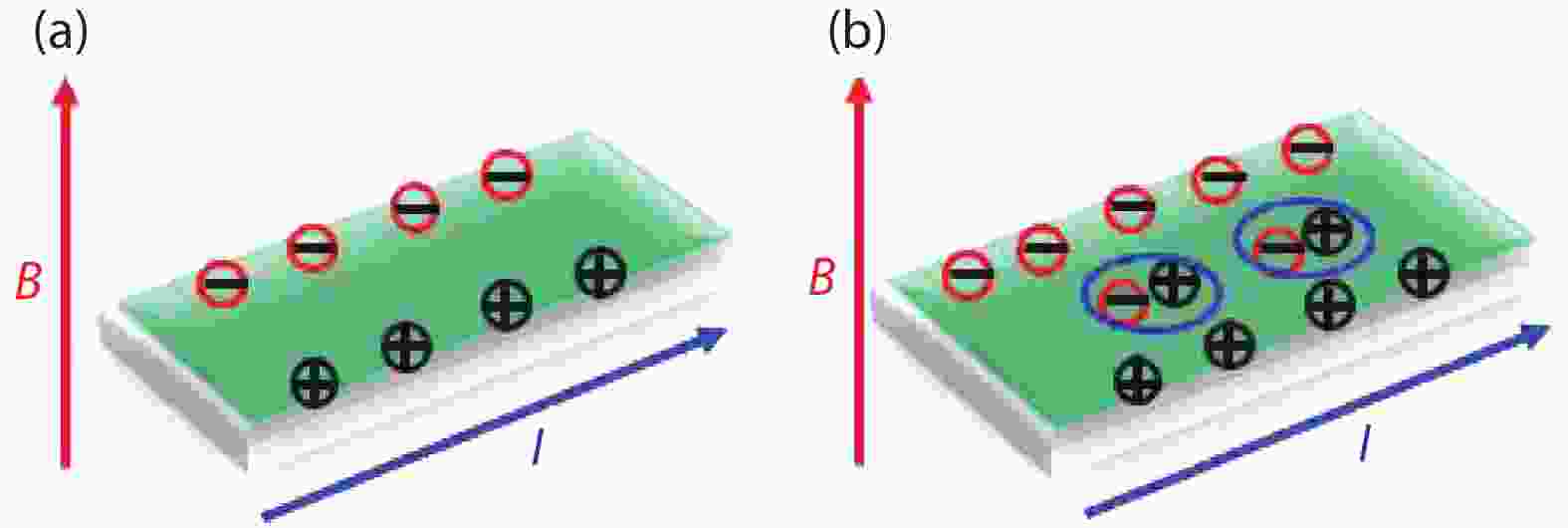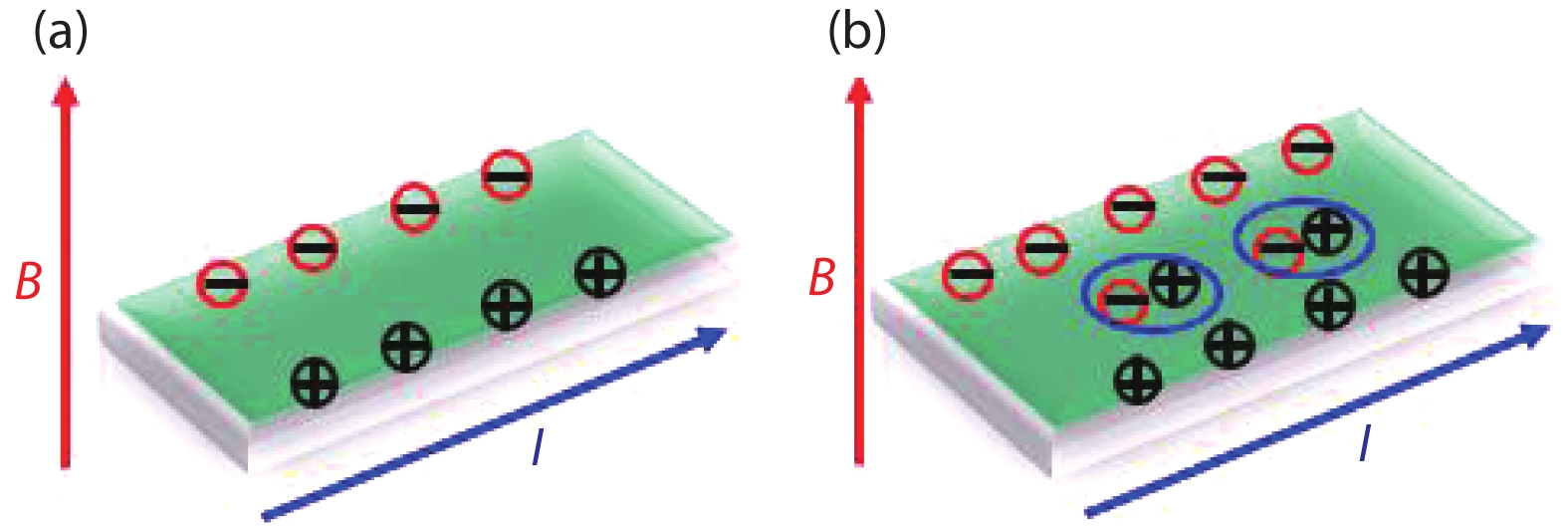| Citation: |
Tengzhi Yang, Yan Cui, Yanru Li, Meiyin Yang, Jing Xu, Huiming He, Shiyu Wang, Jing Zhang, Jun Luo. The effect of γ-ray irradiation on the SOT magnetic films and Hall devices[J]. Journal of Semiconductors, 2021, 42(2): 024102. doi: 10.1088/1674-4926/42/2/024102
T Z Yang, Y Cui, Y R Li, M Y Yang, J Xu, H M He, S Y Wang, J Zhang, J Luo, The effect of γ-ray irradiation on the SOT magnetic films and Hall devices[J]. J. Semicond., 2021, 42(2): 024102. doi: 10.1088/1674-4926/42/2/024102.
Export: BibTex EndNote
|
The effect of γ-ray irradiation on the SOT magnetic films and Hall devices
doi: 10.1088/1674-4926/42/2/024102
More Information-
Abstract
Magnetoresistive random access memories (MRAMs) have drawn the attention of radiation researchers due to their potential high radiation tolerance. In particular, spin-orbit torque MRAM (SOT-MRAM) has the best performance on endurance and access speed, which is considered to be one of the candidates to replace SRAM for space application. However, little attention has been given to the γ-ray irradiation effect on the SOT-MRAM device yet. Here, we report the Co-60 irradiation results for both SOT (spin-orbit torque) magnetic films and SOT-Hall devices with the same stacks. The properties of magnetic films are not affected by radiation even with an accumulated dose up to 300 krad (Si) while the magnetoelectronic properties of SOT-Hall devices exhibit a reversible change behavior during the radiation. We propose a non-equilibrium anomalous Hall effect model to understand the phenomenon. Achieved results and proposed analysis in this work can be used for the material and structure design of memory cell in radiation-hardened SOT-MRAM.-
Keywords:
- SOT-MRAM,
- γ-ray irradiation,
- TID effect,
- anomalous Hall effect
-
References
[1] Hu J M, Chen L Q, Nan C W. Multiferroic heterostructures integrating ferroelectric and magnetic materials. Adv Mater, 2016, 28(1), 15 doi: 10.1002/adma.201502824[2] Perrissin N, Lequeux S, Strelkov N, et al. A highly thermally stable sub-20 nm magnetic random-access memory based on perpendicular shape anisotropy. Nanoscale, 2018, 10(25), 12187 doi: 10.1039/C8NR01365A[3] Sato H, Ikeda S, Ohno H. Magnetic tunnel junctions with perpendicular easy axis at junction diameter of less than 20nm. Jpn J Appl Phys, 2017, 56(8), 9 doi: 10.7567/JJAP.56.0802A6[4] Gerardin S, Paccagnella A. Present and future non-volatile memories for space. IEEE Trans Nucl Sci, 2010, 57(6), 3016 doi: 10.1109/TNS.2010.2084101[5] Cui Y, Yang L, Gao T, et al. Total ionizing radiation-induced read bit-errors in toggle magnetoresistive random-access memory devices. Chin Phys B, 2017, 26(8), 087501 doi: 10.1088/1674-1056/26/8/087501[6] Arias S I R, Muñoz D R, Cardoso S, et al. Total ionizing dose (TID) evaluation of magnetic tunnel junction (MTJ) current sensors. Sens Actuators A, 2015, 225, 119 doi: 10.1016/j.sna.2015.01.021[7] Garello K, Avci C O, Miron I M, et al. Ultrafast magnetization switching by spin-orbit torques. Appl Phys Lett, 2014, 105(21), 5 doi: 10.1063/1.4902443[8] Liu L Q, Lee O J, Gudmundsen T J, et al. Current-induced switching of perpendicularly magnetized magnetic layers using spin torque from the spin Hall effect. Phys Rev Lett, 2012, 109(9), 5 doi: 10.1103/PhysRevLett.109.096602[9] Sato N, El-Ghazaly A, White R M, et al. Effect of Mg oxidation degree on Rashba-effect-induced torques in Ta/CoFeB/Mg(MgO) multilayer. IEEE Trans Magn, 2016, 52(7), 4 doi: 10.1109/TMAG.2016.2580878[10] Wei H X, Qin Q H, Ma M, et al. 80% tunneling magnetoresistance at room temperature for thin Al-O barrier magnetic tunnel junction with CoFeB as free and reference layers. J Appl Phys, 2007, 101(9), 3 doi: 10.1063/1.2696590[11] Yu G Q, Upadhyaya P, Fan Y B, et al. Switching of perpendicular magnetization by spin-orbit torques in the absence of external magnetic fields. Nat Nanotechnol, 2014, 9(7), 548 doi: 10.1038/nnano.2014.94[12] Prenat G, Jabeur K, Di Pendina G, et al. Beyond STT-MRAM, spin orbit torque RAM SOT-MRAM for high speed and high reliability applications. In: Spintronics-based Computing. Springer, 2015, 145[13] Lopes J, Di Pendina G, Zianbetov E, et al. Radiative effects on MRAM-based non-volatile elementary structures. 2015 IEEE Computer Society Annual Symposium on VLSI, 2015[14] Wang B, Wang Z, Hu C, et al. Radiation-hardening techniques for spin orbit torque-MRAM peripheral circuitry. IEEE Trans Magn, 2018, 54(11), 1 doi: 10.1109/TMAG.2018.2830701[15] Nguyen D, Irom F. Radiation effects on MRAM. 2007 9th European Conference on Radiation and Its Effects on Components and Systems, 2007[16] Hall E H. On a new action of the magnet on electric currents. Am J Math, 1879, 2(3), 287 doi: 10.2307/2369245[17] Nagaosa N, Sinova J, Onoda S, et al. Anomalous Hall effect. Rev Mod Phys, 2010, 82(2), 1539 doi: 10.1103/RevModPhys.82.1539[18] Smit J. The spontaneous Hall effect in ferromagnetics I. Physica, 1955, 21(6–10), 877 doi: 10.1016/S0031-8914(55)92596-9[19] Smit J. The spontaneous Hall effect in ferromagnetics II. Physica, 1958, 24(1–5), 39 doi: 10.1016/s0031-8914(58)93541-9[20] Berger L. Side-jump mechanism for the Hall effect of ferromagnets. Phys Rev B, 1970, 2(11), 4559 doi: 10.1103/PhysRevB.2.4559[21] Kong W, Wan C, Wang X, et al. Spin–orbit torque switching in a T-type magnetic configuration with current orthogonal to easy axes. Nat Commun, 2019, 10(1), 1 doi: 10.1038/s41467-018-07882-8[22] Tsen K T. Non-equilibrium dynamics of semiconductors and nanostructures. CRC Press, 2005 -
Proportional views






 DownLoad:
DownLoad:




















